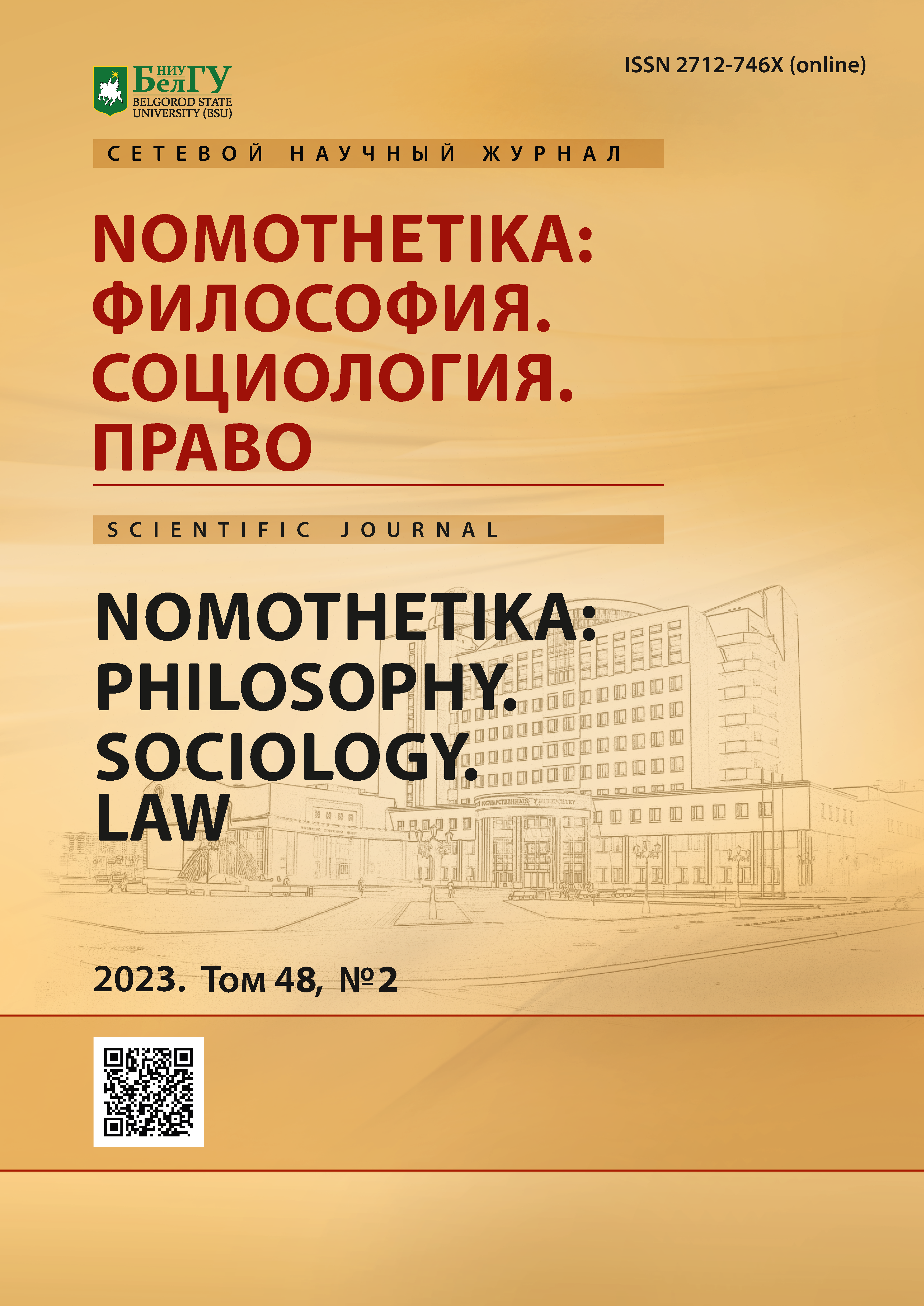The Increasing Complexity of the Law
DOI:
https://doi.org/10.52575/2712-746X-2023-48-2-317-325Keywords:
complexity in law, process of complexification, innovative public law regimes, atypical regulatory technologies, public law, public law sciencesAbstract
This article is part of the scientific legal doctrine of innovative public-law regimes developed by the author. The article explores theoretical approaches to understanding the phenomenon of legal complexity and complexity in law. The article considers a number of existing approaches to the explanation of complexity in law – due to the specific nature of law. The author proves that complexity and simplicity in law are ambivalent (dual) and interrelated. Complexity and simplicity in law are not polar opposing concepts, they are in a certain complex ontological unity. The author turns to the question of the limits of simplification of law. The article considers the determinants of the growth of complexity and increasing entropy in law. The article concludes with the conclusion that the author's unfolded concepts of the axiomatic kernel of understanding and interpretation of complexity in law and in the regulatory space. The author also concludes that legal science is, objectively, a science of complexity, of complex normative, norm-realization and arbitration worlds and ontologies, processes, interactions and counteractions.
Downloads
References
Ponkin I.V., Lapteva A.I. 2022. Metodologiia nauchnykh issledovanii i prikladnoi analitiki: Uchebnik [Methodology of Scientific Research and Practical Analytics: A
Textbook]. Moscow, Buki Vedi. 754 p. (in Russian).
Aguila Y. 2008. La complexité du droit. Lettre "Recherche Droit & Justice", 30.
Bourcier D. 2011. Sciences juridiques et complexité. Un nouveau modèle d’analyse. Droit et Cultures, 61: 37–53.
Charette L. 2007. La gestion de la complexité. Ordre des CRHA. 31 octobre.
Dupuy J.-P. 1981. La simplicité de la complexité. Esprit. Nouvelle série, 57(9): 126–147.
Dupuy J.-P. 1985. Ordres et désordres: Enquête sur un nouveau paradigme. Paris: Seuil. 277 p.
Feldman R. 2009. The Role of Science in Law. New York: Oxford University Press. xii; 222 p.
Kerchove, van de M. 2010. Rien n’est simple, tout se complique. La complexité, limite à la simplification du droit. Qu'en est-il de la simplification du Droit? Actes du colloque des 26 et 27 octobre 2009 / Frédérique Rueda et Jacqueline Pousson-Petit (dir.). Toulouse: Presses de l’Université Toulouse 1 Capitole. 359 p.
Lagarde X. 2003. Pourquoi le droit est-il complexe? Le Débat, 127: 132–142.
Mandelbrot B. 1995. Les objets fractals: Forme, hasard et dimension. Quatrième édition. Paris: Flammarion. iv; 212 p.
Morin E. 1985. La méthode. T. 2: La vie de la vie. Paris: Seuil. 470 p.
Morin E. 1991. La méthode. T. 4: Les idées, leur habitat, leur vie, leurs mœurs, leur organisation. Paris: Seuil. 261 p.
Regulatory Technology for the 21st Century. 2022 Whitepaper. World Economic Forum; Global Future Council on Agile Governance. Geneva (Switzerland). 24 p.
Schuck P.H. 1992. Legal Complexity: Some Causes, Consequences, and Cures. Duke Law Jour-nal, 42(1): 1–52.
Weinberg A. 1995. Les jeux de l'ordre et du désordre. Sciences Humaines, 47.
When Laws Become Too Complex. 2013. A review into the causes of complex legislation. Lon-don: Office of the Parliamentary Counsel. 33 p.
Abstract views: 163
Share
Published
How to Cite
Issue
Section
Copyright (c) 2023 NOMOTHETIKA: Philosophy. Sociology. Law

This work is licensed under a Creative Commons Attribution 4.0 International License.


